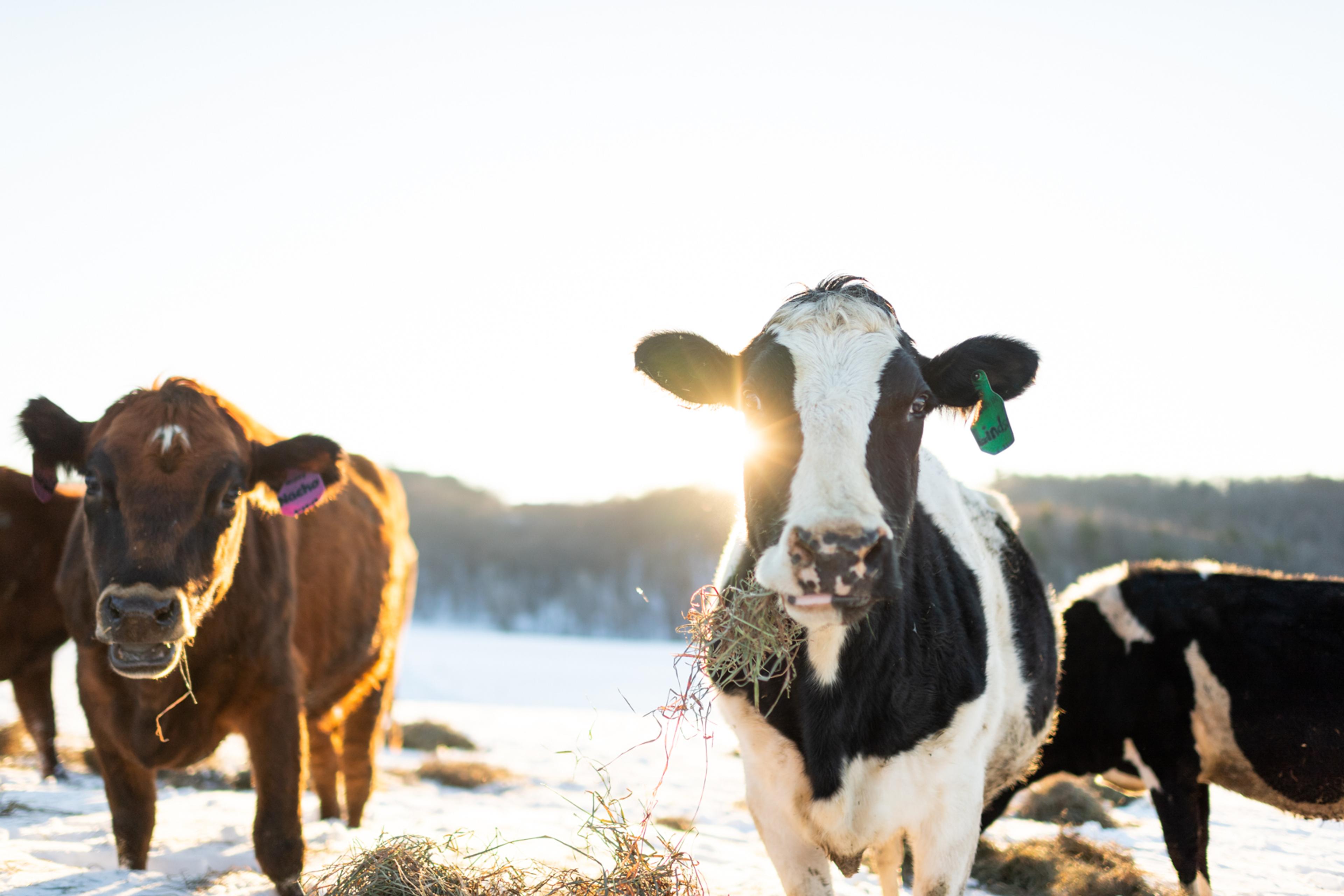
Farming
How are Cows 100% Grass-Fed in Winter?
Organic Valley has three pools* of 100% grass-fed farms (whose milk goes into our Grassmilk® products) located in Oregon, the Midwest and the Northeast. Most of these farms experience frigid temperatures and snow in the wintertime, and even Oregon has a dry season when pastures aren’t productive (even if they don’t get snow). So how do our cows still eat grass in the winter?
Plenty of Land
Organic, 100% grass-fed farms need to be pretty self-sufficient because buying feed can be very expensive. Most of our Grassmilk® farms have enough land for their cows to eat fresh pasture during warm months plus additional land for growing forages that they harvest and store for the winter months.
Scientists at Organic Valley help farmers determine if they have enough land to support their herd size and if their soil is healthy enough to support a grass-fed diet. Sometimes our farmers have to work a few years to transition their farm and cows to a fully grass-based diet. And sometimes a farm simply isn’t suited for feeding only grass (in this case, the cows will still eat mostly grass but also receive a grain ration).
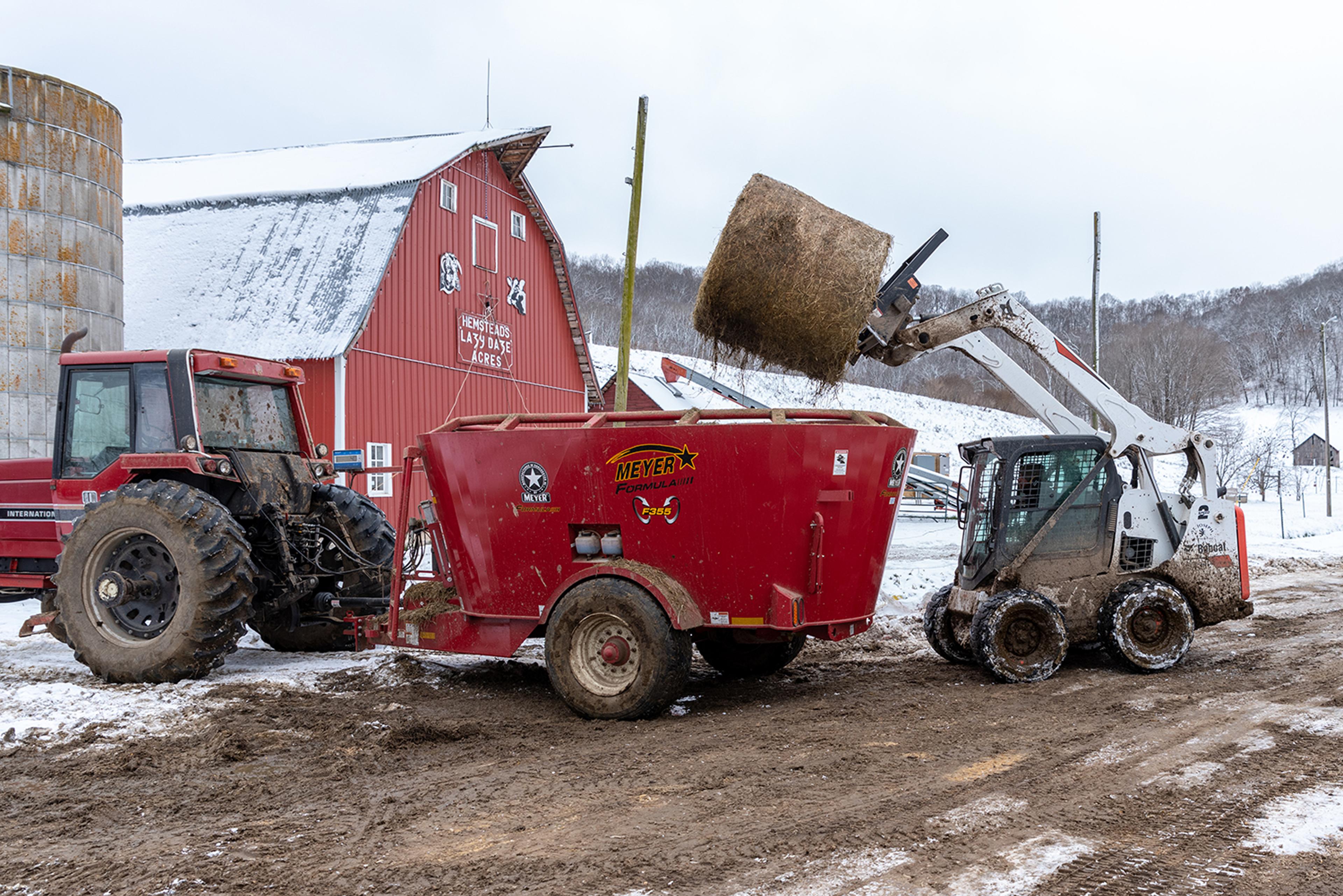
Farmers make sure to have plenty of organic dried forages available for their cows in winter.
Lots of Planning
It’s doubly important for the harvested grasses to have the highest nutrition since they will be dried and stored for many months. Because all nutrition comes from the soil, and since there are no quick fixes in organic agriculture, improving or maintaining soil nutrition requires a fair bit of planning.
Farmers test their soil regularly to determine if they need to apply organic-approved amendments like manure or minerals to improve the soil quality. In addition, harvest timing is essential to locking in the most nutrition and must happen at specific times of the year, so farmers have to plan out their whole year and stay on schedule.
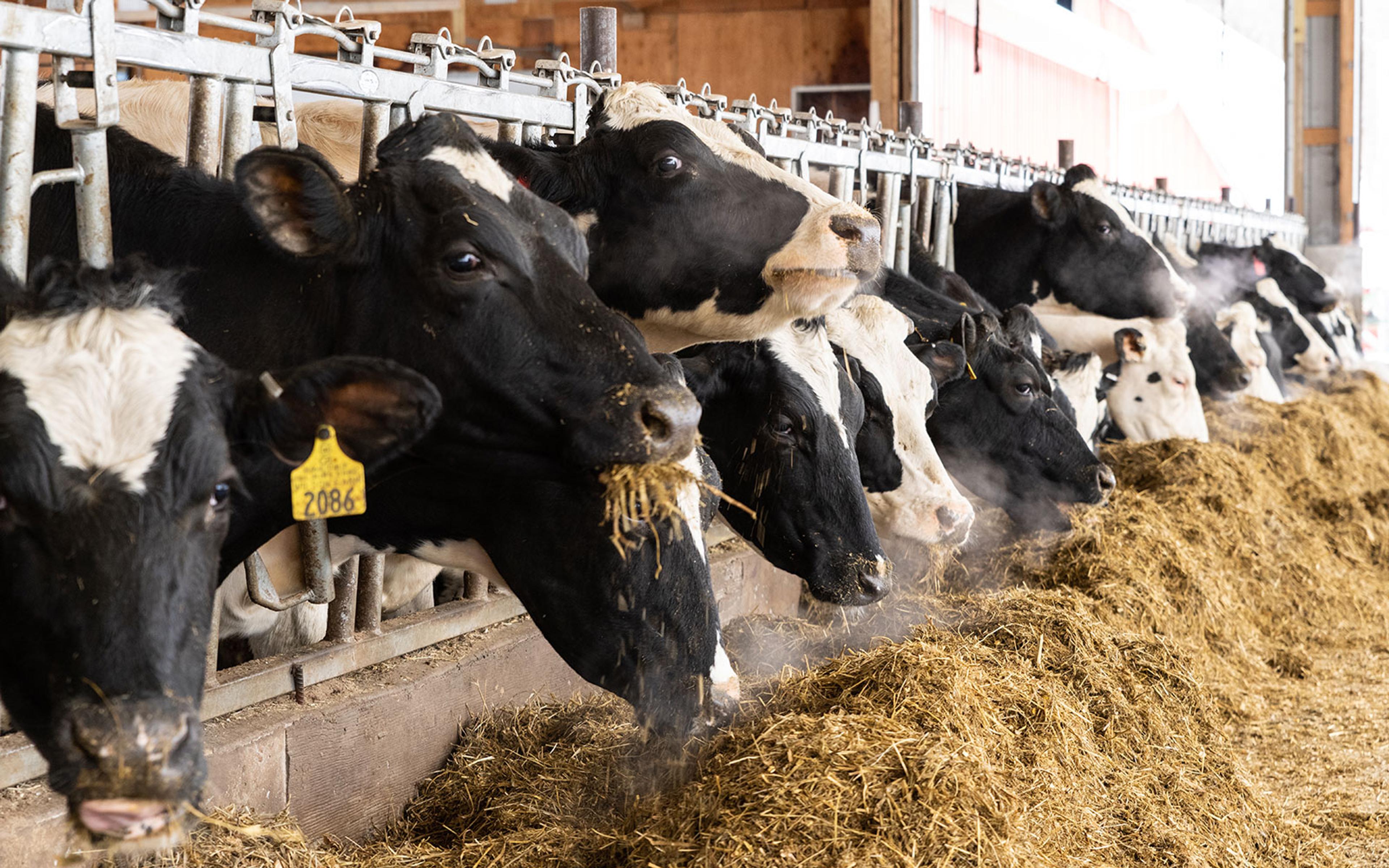
Cows might get extra feed during the wintertime to ensure they have plenty of energy to stay warm.
Plenty of Attention
We at Organic Valley know that prevention is key. When cows are well cared for, spend lots of time outdoors and get the highest nutrition (including plenty of grass, which their bodies are designed to eat), they tend to stay healthy. Even so, because lactating dairy cows require a lot of calories, our 100% grass-fed farmers pay close attention to their cows.
Farmers monitor any changes in their behavior or how they look, so concerns can be addressed immediately. They may also give their cows extra rations to ensure they have plenty of energy to stay warm during the colder weather.
Organic Valley’s animal care standards are demanding, so our more than 250 Grassmilk® farms are also well supported by Organic Valley staff. These farms receive more frequent visits from our animal care experts and regional field staff to help prevent issues or to catch and address them early.
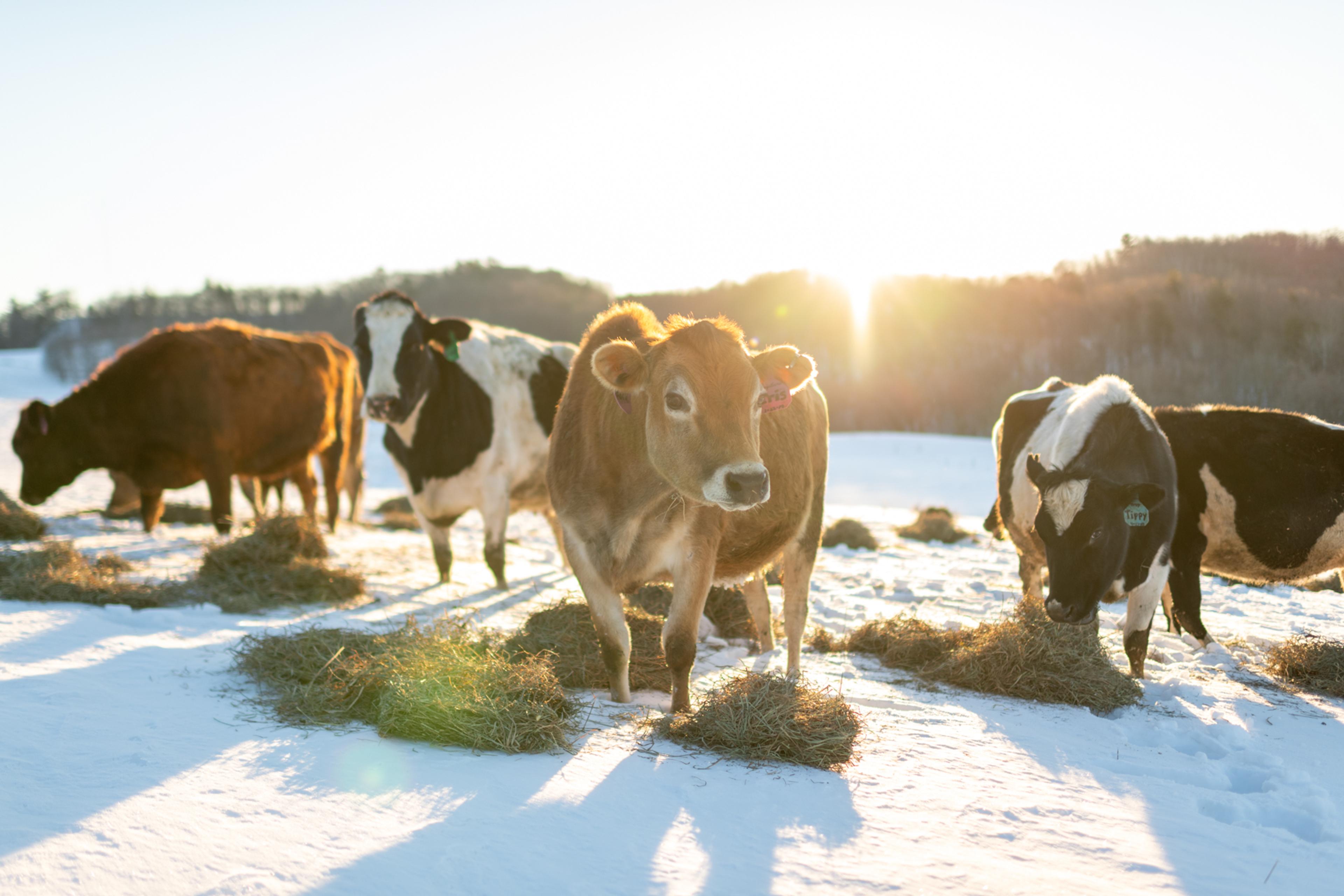
Koenig family farm, Wisconsin
What Exactly do 100% Grass-Fed Cows Eat in Winter?
- Dried forages: Grasses like rye, birdsfoot trefoil, timothy grass, orchardgrass, meadow fescue, sorghum, Sudan grass and more; legumes like clover and alfalfa; plus forbs, herbs and broadleaf pasture plants.
- Fermented grasses (“haylage”): Fermentation not only preserves the grasses but introduces beneficial micronutrients and “good” bacteria, similar to the benefits fermented vegetables provide to humans.
- Supplements: A small portion of the diet includes organic-approved supplements, like molasses, salt and other vitamin and mineral supplements, to provide balanced nutrition.
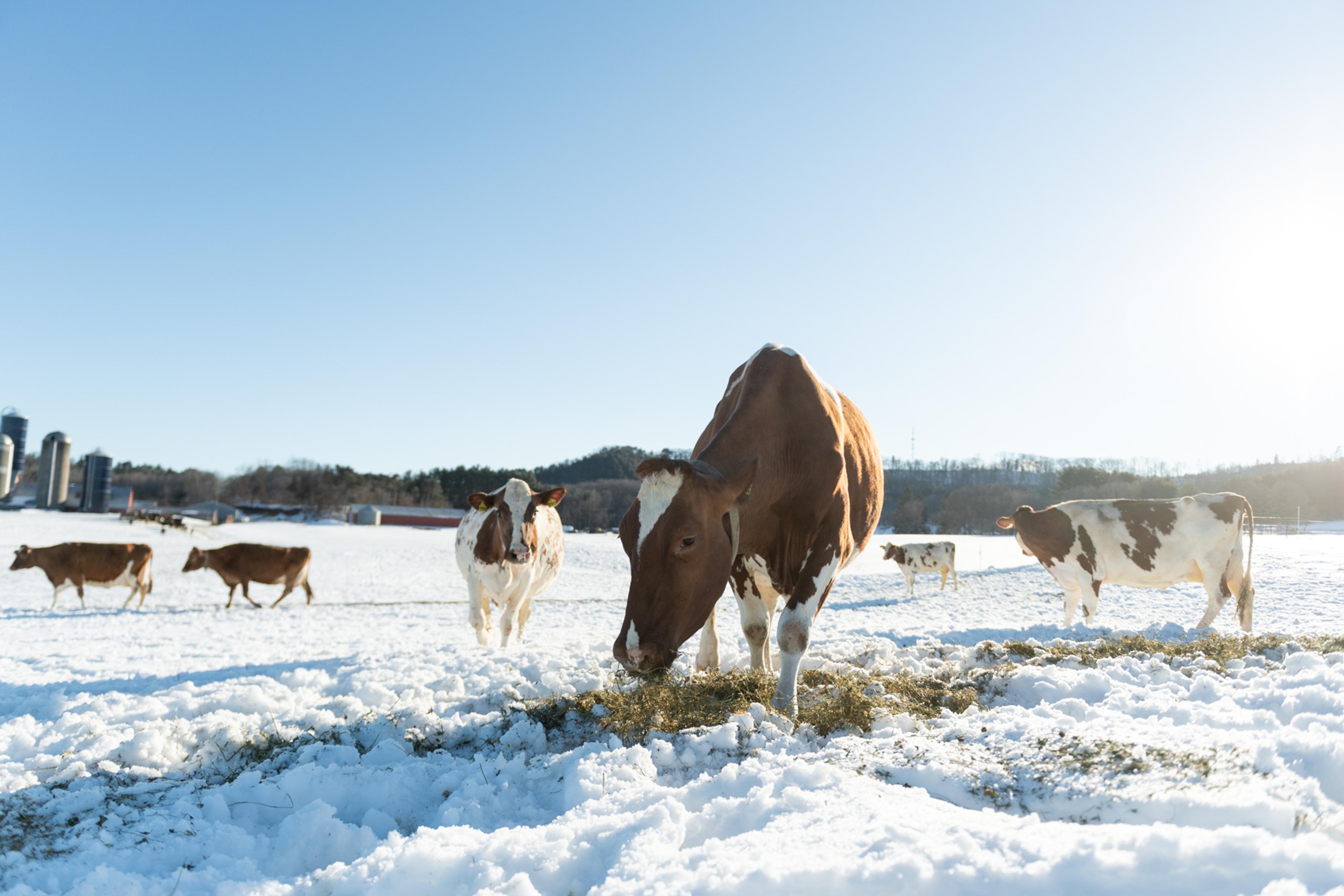
Footnote:
* In the dairy world, a “pool” refers to a group of farms located near each other and whose milk is pooled together for transport and packaging.
Related Articles
- Tags:
- animal care,
- farm life,
- grass-fed,
- food labeling

















